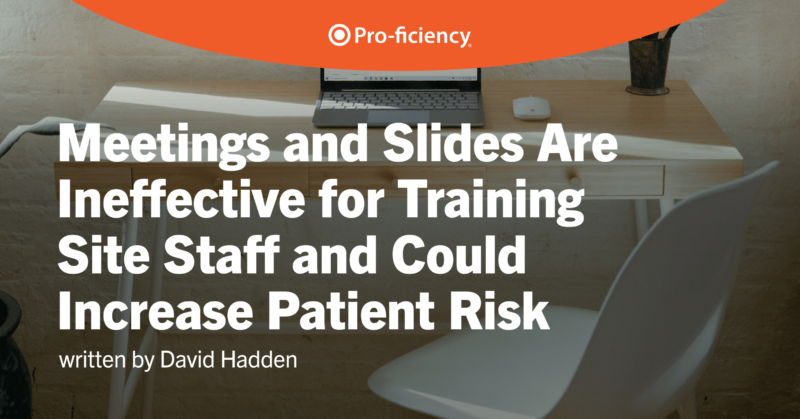Do You Identify Your Site Heroes?
If a clinical trial was a 747,
…then the subjects would be the passengers …and the flight crew the site staff.
Imagine if the airline industry used meetings and powerpoint to train their flight crew rather than simulation! We would all be doing a lot more driving and less flying.
Simulation-based training made commercial aviation much safer. It also made it possible to predict pilots’ actions and decisions based on their performance in the training simulations. This technology has always been out of reach of the clinical trials industry due to the time and cost to develop simulations for protocol training and GCP.
Pro-ficiency has brought this powerful technology well within reach of Pharmaceutical Sponsors, and it is transforming training from a burdensome cost center into a powerful site performance management system that predicts errors and site engagement.
The Pro-ficiency dashboard shows investigator performance in the training simulations across dozens of critical protocol and GCP metrics (the vertical columns). A blue checkmark indicates that that specific decision was made appropriately. If the learner makes a mistake, then a brief video-based corrective action is launched and they get a yellow icon. If the learner makes that mistake again, then they get a red icon.
Lots of yellow icons indicate that, while knowledge gaps were identified, they were also easily corrected. Lots of red icons means those investigators are either not trying or they are having real problems understanding the protocol.

Based on the performance of the 2 sites above, which one would you trust with your protocol more and expect better performance from?
Pro-ficiency identifies your rockstar sites and individual site heros. These data are invaluable for CRAs and monitors as they struggle to support sites and keep the study moving.

Dave Hadden is an entrepreneur and technology innovator, founding Pro-ficiency and pioneering the fields of A.I.-based medical decision-support, Training Analytics, and Virtual Patient Simulation (VPS). Dave has focused his passion for technological innovation and learning systems in the field of clinical trials, helping sponsors make their studies more accurate and efficient through finding the right technology mix such as virtualization, performance management and applied behavioral sciences to produce the most effective, lasting, and engaging results for clinical trials.









